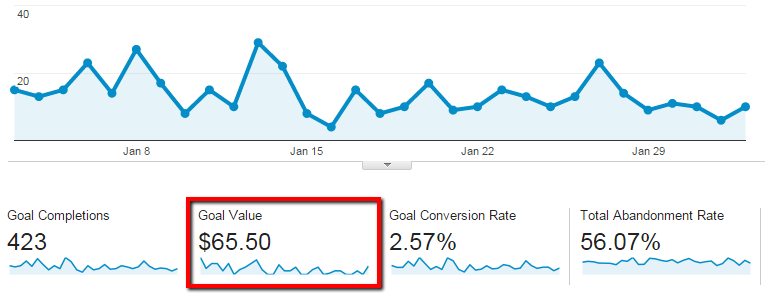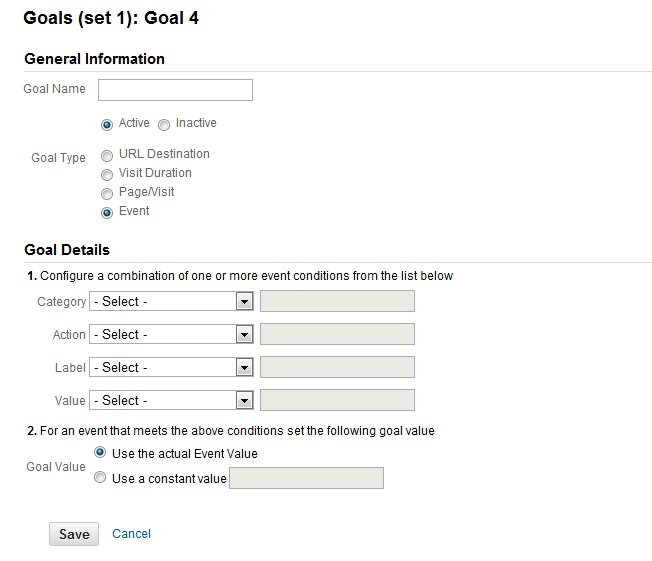Exploring What Data Is Google Analytics Goals Unable to Track
Exploring What Data Is Google Analytics Goals Unable to Track
Blog Article
Demystifying Google Analytics Limitations: Reveal What Data Goals Can not Track
In the realm of digital analytics, Google Analytics stands as a powerful device that provides beneficial insights right into website efficiency and customer behavior. Nevertheless, amidst its capabilities, there exist constraints that commonly go unnoticed. Comprehending what Google Analytics can not track is critical for an extensive understanding of data interpretation and decision-making processes. From the details of user communication with dynamic content to the intricacies of cross-device user journeys, these limitations clarified locations that might continue to be obscured from traditional analytics perspectives. By unwinding these restraints, a more clear picture arises, enabling even more enlightened methods and refined understandings into individual engagement and conversions.

Individual Interaction With Dynamic Material
Customer interaction with dynamic content plays an essential role in recognizing customer habits on internet sites and optimizing the general user experience. Dynamic material describes aspects on a website that can transform without the demand for a complete page reload. This includes interactive elements such as pop-ups, sliders, types, and video clips that reply to individual actions in real-time. By tracking user communications with vibrant web content, internet site owners can get useful insights right into customer involvement, choices, and actions.
Google Analytics provides numerous devices to track customer communications with vibrant material, such as event tracking and digital pageviews. Occasion monitoring permits you to keep track of certain individual activities, like clicking a switch or viewing a video clip, supplying data on how individuals interact with dynamic aspects. Virtual pageviews can be used to track interactions that do not result in a brand-new web page tons, supplying a detailed view of customer involvement with vibrant material. By assessing this data, internet site owners can make informed decisions to improve user experience and drive conversions.
Cross-Device User Journeys
How can modern-day analytics tools track the complex paths individuals take across several gadgets in their on the internet journeys? Cross-device customer journeys present a substantial difficulty for tracking and analyzing customer habits accurately. As individuals connect with apps or sites using numerous gadgets such as tablets, desktop computers, and smartphones, it ends up being crucial to understand just how they move between these platforms to optimize customer experience efficiently.
Google Analytics encounters restrictions in tracking cross-device individual journeys due to privacy problems and technological restrictions - what data is google analytics goals unable to track. While it can provide insights into private devices' interactions, tracking a smooth user trip throughout numerous devices continues to be an obstacle. This constraint can lead to incomplete information and fragmented user insights, making it difficult for companies to develop a unified view of the customer journey
To resolve this concern, businesses can utilize innovative analytics devices that offer cross-device monitoring capabilities, permitting them to acquire an extra alternative understanding of user actions. By leveraging these devices, services can link the space in tracking cross-device individual journeys and optimize their electronic techniques for a smooth customer experience.
Offline Conversions and Acknowledgment
As companies browse the difficulties of tracking cross-device user journeys, an additional critical aspect to take into consideration is the realm of offline conversions and attribution in the world of information analytics. While Google Analytics provides beneficial understandings right into online user habits, it fails when it involves tracking conversions that occur offline. This restriction presents a considerable challenge for businesses that have both online and offline sales channels.
Offline conversions, such as purchases made in physical stores or through call centers, are vital to comprehending the full consumer trip. Without the capability to attribute these offline conversions to certain online communications, services may have a hard time to accurately gauge the influence of their digital marketing initiatives.
To resolve this space, companies can explore alternative options such as incorporating CRM systems with on-line analytics tools or utilizing one-of-a-kind coupon codes that can be traced back to on-line campaigns. By bridging the space between online and offline data, businesses can acquire a much more thorough understanding of their consumers' behavior and improve their total advertising and marketing strategies.
Person User Identification
In the realm of information analytics, the capability to accurately determine individual customers throughout numerous on-line touchpoints is a vital difficulty for services looking for to customize and enhance their marketing strategies. While more info here Google Analytics gives valuable insights into individual behavior and interactions, it drops short in making it possible for the recognition of specific people as a result of personal privacy concerns and technical constraints. Google Analytics makes use of distinct identifiers such as cookies to track individual sessions and habits, but these do not correspond to recognizing specific customers in an individual sense.

Data From Secure Pages
In spite of the enhancing prevalence of secure pages on internet sites, acquiring information from these encrypted sources offers a special obstacle for digital analytics systems like Google Analytics. Safeguard web pages, suggested by HTTPS in the link, secure data traded between the customer's internet browser and the website's web server to guarantee personal privacy and safety. While this encryption is essential for shielding delicate information, it likewise poses restrictions for tracking customer behavior and gathering analytics information.
Google Analytics deals with barriers in collecting comprehensive details from secure web pages due to the file encryption methods in place. Therefore, particular information points such as recommendation resources, keyword searches, and also some user communications might not be fully caught when customers access a site with a safe and secure link. This limitation can impact the accuracy and completeness of the information evaluation, causing voids in understanding user habits and preferences on safe web pages.
To browse this obstacle, digital experts might require to check out alternate monitoring approaches or leverage other devices specifically created to collect insights from safe web pages. By adapting techniques to suit these restrictions, organizations can still derive important analytics in spite of the restrictions presented by encrypted links.
Final Thought
In conclusion, Google Analytics has constraints in tracking individual interaction with vibrant content, cross-device customer trips, offline conversions, individual customer identification, and information from protected pages. Regardless of its important understandings, Google Analytics may not give a full image of user involvement across numerous touchpoints.
User communication with vibrant web content plays a click here now critical function in understanding customer behavior on internet sites and maximizing the total user experience. By tracking individual communications with vibrant web content, website proprietors can gain important insights right into individual involvement, preferences, and habits.
Google Analytics uses distinct identifiers such as cookies to track user sessions and habits, yet these do not correspond to identifying specific customers in a personal sense.
As an outcome, particular data factors such as referral sources, keyword searches, and also some customer interactions might not be completely caught when customers access a site with a safe and secure connection.In final thought, Google Analytics has limitations in tracking individual communication with vibrant web content, cross-device customer journeys, offline conversions, private user identification, and information from secure pages.
Report this page